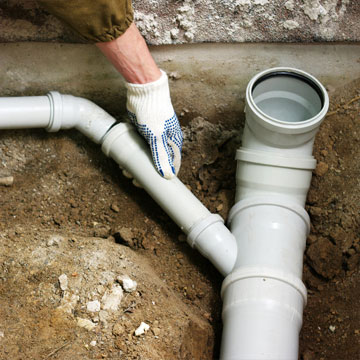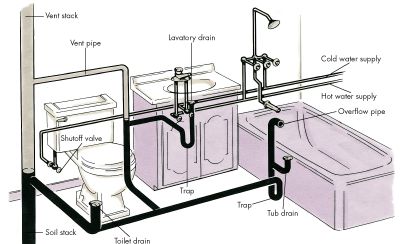Everything You Need to Know to Your Home's Plumbing System Anatomy
Everything You Need to Know to Your Home's Plumbing System Anatomy
Blog Article
How do you feel when it comes to Anatomy of a House: Understanding the Components?

Comprehending just how your home's plumbing system works is necessary for every house owner. From delivering clean water for alcohol consumption, food preparation, and bathing to securely removing wastewater, a properly maintained pipes system is essential for your family members's health and comfort. In this comprehensive guide, we'll discover the complex network that makes up your home's plumbing and offer ideas on upkeep, upgrades, and taking care of common problems.
Intro
Your home's pipes system is greater than simply a network of pipes; it's a complex system that guarantees you have accessibility to tidy water and efficient wastewater removal. Knowing its elements and exactly how they work together can help you avoid expensive fixings and make certain everything runs smoothly.
Basic Parts of a Pipes System
Pipelines and Tubes
At the heart of your plumbing system are the pipes and tubing that carry water throughout your home. These can be made of different products such as copper, PVC, or PEX, each with its benefits in regards to resilience and cost-effectiveness.
Fixtures: Sinks, Toilets, Showers, etc.
Fixtures like sinks, toilets, showers, and bathtubs are where water is made use of in your house. Recognizing just how these components attach to the plumbing system helps in diagnosing problems and intending upgrades.
Shutoffs and Shut-off Factors
Shutoffs regulate the circulation of water in your plumbing system. Shut-off valves are essential during emergencies or when you require to make fixings, allowing you to isolate parts of the system without interfering with water circulation to the whole home.
Supply Of Water System
Main Water Line
The primary water line connects your home to the municipal water supply or an exclusive well. It's where water enters your home and is dispersed to different fixtures.
Water Meter and Stress Regulator
The water meter measures your water use, while a stress regulator ensures that water moves at a secure stress throughout your home's plumbing system, preventing damage to pipes and components.
Cold Water vs. Warm water Lines
Comprehending the distinction in between cold water lines, which supply water directly from the major, and hot water lines, which lug warmed water from the water heater, assists in troubleshooting and preparing for upgrades.
Drain System
Drain Piping and Traps
Drain pipes carry wastewater away from sinks, showers, and commodes to the drain or septic system. Catches prevent sewage system gases from entering your home and likewise catch particles that might create blockages.
Ventilation Pipelines
Ventilation pipelines allow air right into the drainage system, preventing suction that can slow down water drainage and trigger catches to empty. Correct ventilation is important for keeping the stability of your pipes system.
Significance of Correct Drain
Making certain proper drainage stops back-ups and water damage. Regularly cleansing drains and keeping catches can stop pricey repairs and prolong the life of your pipes system.
Water Heating System
Kinds Of Hot Water Heater
Water heaters can be tankless or standard tank-style. Tankless heating systems heat water on demand, while storage tanks save warmed water for immediate use.
Upgrading Your Plumbing System
Factors for Updating
Updating to water-efficient fixtures or replacing old pipes can improve water high quality, minimize water costs, and increase the value of your home.
Modern Plumbing Technologies and Their Benefits
Check out technologies like smart leak detectors, water-saving bathrooms, and energy-efficient water heaters that can save cash and minimize ecological impact.
Cost Considerations and ROI
Determine the in advance expenses versus lasting cost savings when taking into consideration pipes upgrades. Numerous upgrades pay for themselves through reduced utility bills and less repair work.
Just How Water Heaters Attach to the Pipes System
Understanding exactly how water heaters attach to both the cold water supply and hot water circulation lines helps in diagnosing issues like insufficient hot water or leakages.
Upkeep Tips for Water Heaters
On a regular basis purging your hot water heater to get rid of sediment, checking the temperature setups, and evaluating for leakages can expand its life-span and boost power performance.
Common Pipes Concerns
Leakages and Their Causes
Leaks can occur due to maturing pipes, loosened installations, or high water stress. Attending to leaks quickly avoids water damage and mold growth.
Obstructions and Clogs
Blockages in drains and toilets are often brought on by flushing non-flushable things or an accumulation of grease and hair. Using drainpipe displays and being mindful of what decreases your drains can avoid blockages.
Indicators of Pipes Issues to Watch For
Low water stress, sluggish drains, foul odors, or abnormally high water bills are indicators of possible plumbing troubles that must be dealt with promptly.
Pipes Maintenance Tips
Normal Assessments and Checks
Arrange yearly pipes assessments to capture problems early. Seek indicators of leakages, rust, or mineral build-up in faucets and showerheads.
Do It Yourself Maintenance Tasks
Straightforward tasks like cleansing faucet aerators, checking for commode leaks making use of dye tablet computers, or insulating revealed pipes in cold environments can prevent significant plumbing problems.
When to Call a Specialist Plumbing Technician
Know when a plumbing issue requires specialist experience. Attempting complex repair services without proper knowledge can bring about more damages and greater repair work prices.
Tips for Decreasing Water Use
Simple habits like taking care of leaks quickly, taking much shorter showers, and running full tons of washing and meals can preserve water and reduced your utility expenses.
Eco-Friendly Pipes Options
Consider sustainable plumbing materials like bamboo for floor covering, which is durable and eco-friendly, or recycled glass for counter tops.
Emergency situation Readiness
Steps to Take During a Pipes Emergency
Know where your shut-off valves are located and just how to switch off the supply of water in case of a burst pipeline or major leak.
Value of Having Emergency Situation Calls Handy
Keep get in touch with info for neighborhood plumbings or emergency services easily offered for fast feedback throughout a plumbing crisis.
Environmental Effect and Conservation
Water-Saving Fixtures and Home Appliances
Setting up low-flow taps, showerheads, and commodes can significantly decrease water usage without sacrificing performance.
DIY Emergency Fixes (When Appropriate).
Momentary solutions like making use of air duct tape to spot a leaking pipe or putting a container under a trickling tap can lessen damages till a professional plumbing gets here.
Verdict.
Comprehending the composition of your home's pipes system equips you to keep it effectively, conserving money and time on repair services. By complying with routine maintenance regimens and remaining notified regarding modern plumbing technologies, you can ensure your pipes system runs effectively for many years ahead.
Understanding Your Home Plumbing System: A Comprehensive Guide
Plumbing System: The Lifeline of Your Home
At its core, the plumbing system is designed to perform two primary functions: bring fresh water into your home and remove wastewater. The system is a network of pipes, fixtures, and other components that transport water and sewage. Residential plumbing systems include potable water supply lines, drain-waste-vent (DWV) systems, and various plumbing fixtures that make water use in daily tasks possible.
Key Components:
Water Supply: This part of your plumbing system brings municipal water into your home, passing through the main water supply line. It s responsible for supplying all water needs, from drinking to bathing.
Drainage System: It carries waste and water away from your home to the sewer or septic system. This system includes all the piping within your home that leads to external sewage or septic systems.
Vent System: An essential yet often overlooked component, the vent system allows sewer gases to escape and lets air into the drainpipes, ensuring water and waste move correctly through the system.
Fixture: More Than Just Taps and Toilets
Plumbing fixtures are the most interactive parts of the plumbing system, including faucets, showers, toilets, and sinks. Each fixture is connected to the plumbing system and plays a role in either the delivery of freshwater or the disposal of waste and wastewater.
Types of Fixtures:
Faucets and Sinks: Used for washing hands, dishes, and other daily water needs. Toilets: Dispose of human waste through the sewage system. Bathtubs and Showers: Provide bathing facilities, requiring both hot and cold water supply. Water Supply: The Source of Life
The water supply system is a critical component, ensuring that potable water is available throughout your home for various uses, including drinking, cooking, and cleaning. This system consists of pipes that distribute water to different parts of the house, controlled by valves to regulate the water flow.
Types of Plumbing: Materials and Methods
Various types of plumbing systems and materials are used in residential settings, each with its advantages and applications. From copper and PVC pipes for water supply to cast iron and ABS for drainage, the choice of materials can impact the longevity and efficiency of your plumbing system.
https://intownplumbingtx.com/articles/home-plumbing-system-guide/

I am just very focused on Understanding Your Home's Plumbing Anatomy and I'm hoping you appreciated my entry. Sharing is caring. Helping others is fun. Thank you for going through it.
Visit My Website Report this page